A Global Perspective on the Food System
I am never going to be a global expert on the food system, but I do love globe-trotting and talking to local people about food.
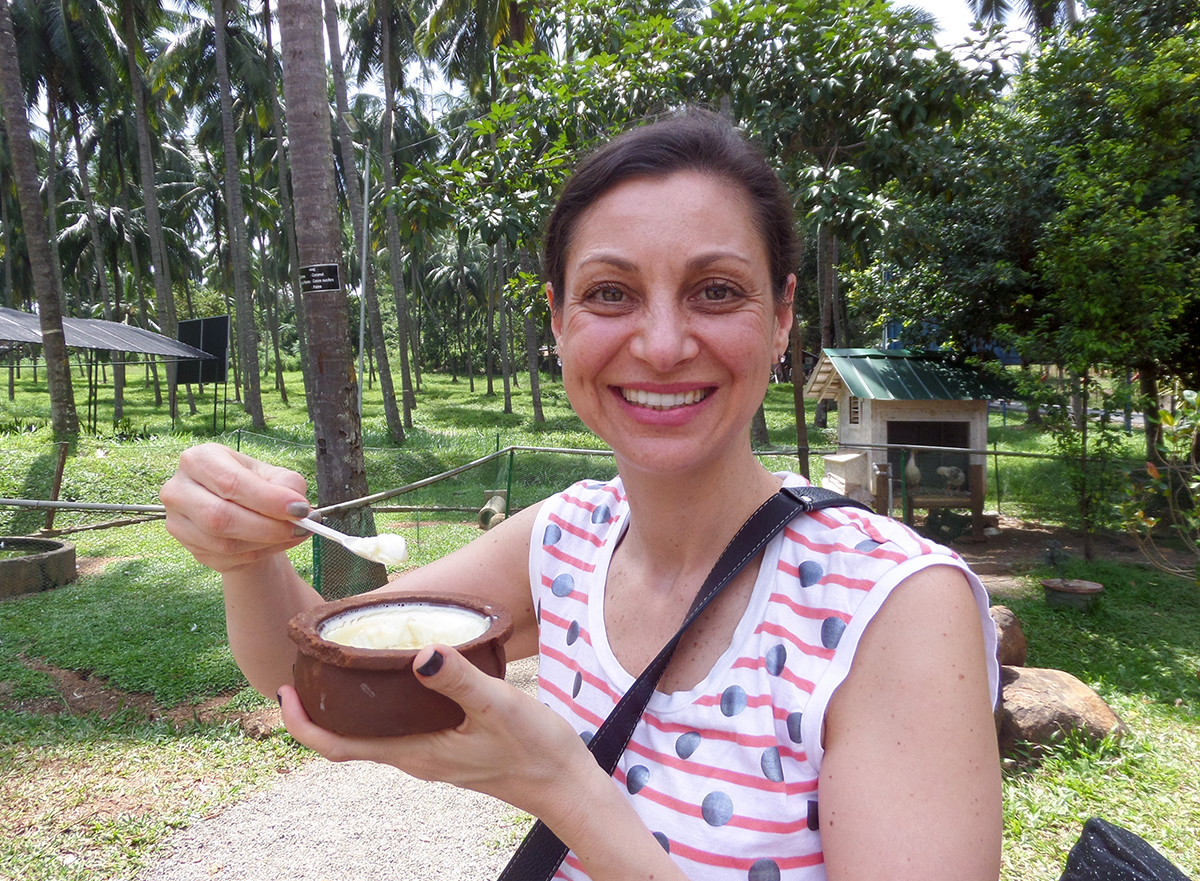
Enjoying some buffalo-milk curds with treacle
In recent years, I’ve been lucky enough to travel from South America to Southeast Asia, and like many of you would, I have sought out indigenous food experiences. Here’s some of what I’ve heard in my travels. I offer these tidbits as a look through the local peoples’ perspective, not as scientific facts. Some of what they shared may not actually be true, but the fact that they think it is can be interesting all by itself.
Chicken about chicken
As I snacked on buffalo curd with treacle (tasted like yogurt with honey) in Sri Lanka, my driver volunteered that they don’t serve chicken to their kids, especially young girls, because of “all the chemicals and drugs”in commercial poultry. I promise I hadn’t primed him with a lecture on antibiotics abuse or even told him what I do for a living — he just shared this.
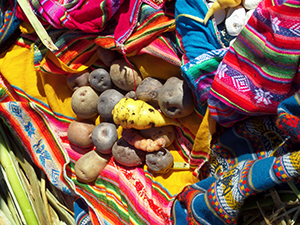 Passion for potatoes
Passion for potatoes
Peruvians are incredibly proud of the biodiversity offered in their country. I heard over and over again about the more than 4,000 colorful kinds of potatoes they grow as well as many, many types of corn — and quinoa, their current most profitable crop. I was told that the high price quinoa is fetching in the global 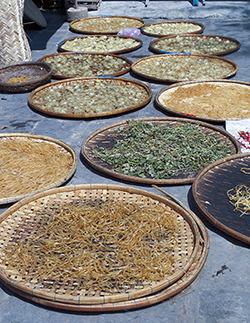 marketplace is a double-edged sword. Farmers can no longer afford to keep quinoa to feed their families as it’s too tempting to sell this protein-rich, trendy seed. That means more money in their pockets,but less nutritious food on their tables.
marketplace is a double-edged sword. Farmers can no longer afford to keep quinoa to feed their families as it’s too tempting to sell this protein-rich, trendy seed. That means more money in their pockets,but less nutritious food on their tables.
Hyper-local noodles
These noodles, destined for a dish called cao lau, are only made in Hoi An, Vietnam. Probably an offspring of the Japanese occupation or maybe of the Chinese traders, cao lau noodles are made from rice that is soaked in lye and water from local wells, which has a distinct mineral mixture due to the wells’ age and the region’s soil composition. Talk about terroir!
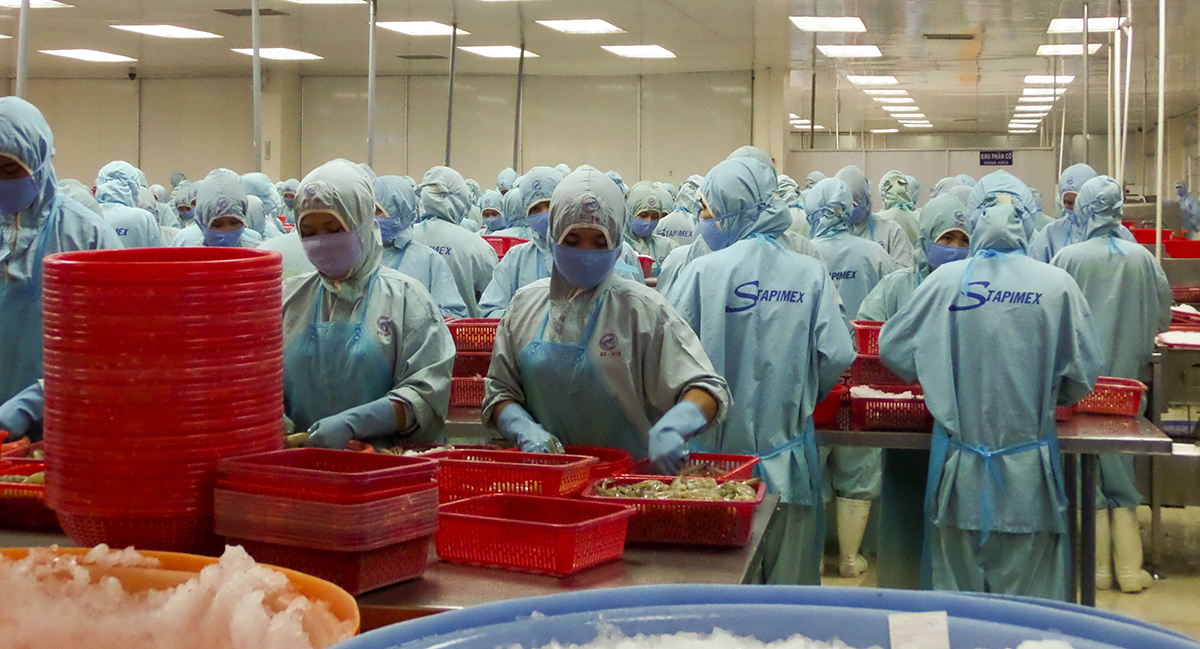
A-peeling jobs
When I signed up to visit a shrimp farm in the Mekong Delta region of Vietnam, I was interested in learning about antibiotics use and stocking densities in ponds.What I hadn’t anticipated was the density of workers packed into the processing plant (below). Of course I knew labor is cheap in Vietnam, but I had no idea how manual all the processes would be. Armies of men and women, covered up from head to toe, stood in refrigerated room after refrigerated room sorting, steaming, peeling, and breading shrimp. (Funnily enough, a rep from a major meat processor was on the tour and was blown away at the lack of automation and how many hands were touching each shrimp. The Vietnamese rep was extremely proud of their machinery. Different perspectives.)
I asked the factory manager if they were cross-trained, and he looked at me like I had asked if they could stand on their heads. The idea of varying the work for ergonomics’ sake or to keep things interesting — or even to ensure all positions are always covered — seemed very foreign to him.What he did speak in great detail about was microbial testing and the likes and dislikes of the Dutch shrimp market versus the Japanese.Clearly he was more focused on his customers than his employees.

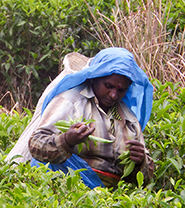 Tea stands for tough work
Tea stands for tough work
These hardworking women in Sri Lanka make around 600 rupees a day for harvesting 20 kilos of tea, plus a bonus of 25 rupees for each additional kilo. When I was there, the exchange rate was 133 rupees to the dollar, so we’re talking less than $5 a day, and they work rain or shine. My trekking guide told me the pickers are Tamils, people originally from India brought in because the Sri Lankan people wouldn’t “do the work.” As you can imagine, that set off red flags for me and I wanted to learn more. But either the guide’s English wasn’t good enough or he didn’t want to talk about issues of racism or slavery. I was heartened when I visited the offices of Bio Foods, an Organic and Fair Trade tea and spice company, and heard one of the issues they’re addressing is racism through their model of “harmony from nature to culture,” balancing the needs of three distinct populations (Sinhalese,Tamils, and Muslims) as well as protecting the environment.
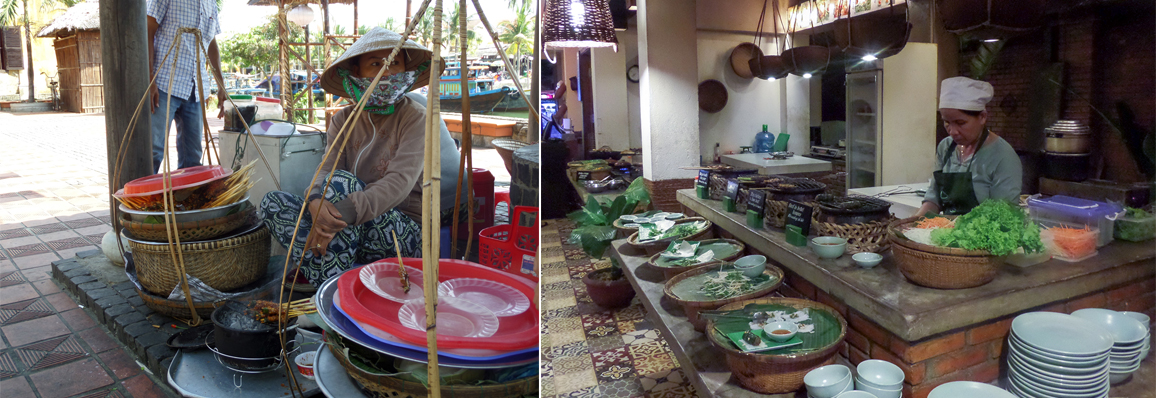
Street food courts
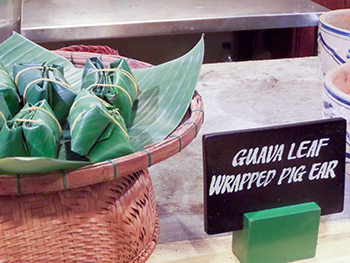 Food tours and cooking classes are popping up everywhere.Not everyone is as comfortable as I am trying street food though. (Sugared soybeans over ice with some black algae cubes, anyone?) Catering to tourists who want to try a wide variety of local specialties, Hoi An’s premier restaurateur opened Ms.Vy’s Market and Cooking School. She says, “My idea was to provide an interactive experience where customers could gain a better understanding of the cooking culture in Vietnam. Everything here is made fresh to order — just like in the actual real market — except here our guests can really see how the ingredients and dishes are prepared.” I would add that in her establishment, guests also eat without fear of foodborne illness (not that I’ve ever gotten sick, and I’ve eaten a lot of street food). What I was really struck with was how much the Market looked like one of our cafés, with stations for soups and noodles, wraps, barbecued meats, and more — except we don’t have a station called “weird wonderful food” serving silkworm salad or guava leaf–wrapped pig ear.
Food tours and cooking classes are popping up everywhere.Not everyone is as comfortable as I am trying street food though. (Sugared soybeans over ice with some black algae cubes, anyone?) Catering to tourists who want to try a wide variety of local specialties, Hoi An’s premier restaurateur opened Ms.Vy’s Market and Cooking School. She says, “My idea was to provide an interactive experience where customers could gain a better understanding of the cooking culture in Vietnam. Everything here is made fresh to order — just like in the actual real market — except here our guests can really see how the ingredients and dishes are prepared.” I would add that in her establishment, guests also eat without fear of foodborne illness (not that I’ve ever gotten sick, and I’ve eaten a lot of street food). What I was really struck with was how much the Market looked like one of our cafés, with stations for soups and noodles, wraps, barbecued meats, and more — except we don’t have a station called “weird wonderful food” serving silkworm salad or guava leaf–wrapped pig ear.